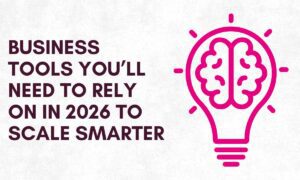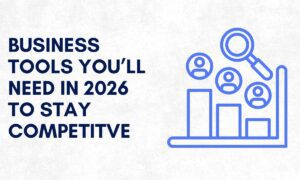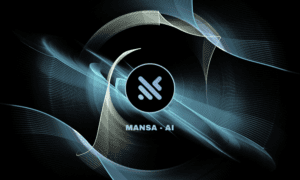As AI becomes increasingly embedded into daily business processes, the focus for functional architects like Herbert Roy George is on streamlining processes that give people back part of their day while ensuring AI is applied in ways that reduce friction rather than add to it. “When dealing with customers, we have to understand different stakeholders are at different points in their journey,” George explains. “The first step is creating a roadmap that reflects where the enterprise is today and where it needs to be tomorrow. Not everybody needs the most updated or modern tools. AI requires a lot of effort like any other IT tool. A recent MIT survey showed that over 95% of AI project failed to show ROI’. What matters is choosing the right solutions for their current point of the journey.” With experience spanning ERP, cloud, analytics, and AI, he has guided enterprises through complex digital transformations and continues to advocate for technology that is designed to free people to focus on higher-value tasks. “Technology is an enabler. If you’re doing things well, it can automate and scale them. If you’re making mistakes, it will accelerate those mistakes too,” he says.
The HR Advantage in the AI Age
Herbert is particularly attuned to the opportunities and challenges of HR technology. As a business function, HR has historically lagged behind others when it comes to automation. For him, this late arrival may be an advantage. “HR came to the table when AI was already discovered. Unlike finance or marketing, they don’t have to go through decades of painful cycles of legacy systems,” he says. “They can capitalize on AI immediately.” Herbert sees tremendous potential in helping HR leaders to make decisions faster, more accurately, and more persuasively than ever before. “HR departments need to be strong on numbers. They need to know how to analyze a dataset, defend their interpretations, and ensure their understanding matches reality,” he explains, stressing the importance of maintaining analytical rigor and noting the lessons learned from early adopters: garbage in, garbage out. “The most critical requirement is having a strong problem statement. If your question is vague, AI will give you a vague answer.”
Balancing AI with the Human Element
Despite his advocacy for AI-driven solutions, Herbert warns against neglecting the human side of HR. At its core, information systems exist to support decision-making, not replace it.“What it [AI] will do is complement humans, especially in low-friction use cases. Start small, let people build confidence, and then move toward bigger challenges.” Governance, he argues, is another pillar of responsible adoption. Enterprises need clear rules about how information is handled, verified, and acted upon. “Without governance, AI adoption will be shaky. With it, AI becomes a trustworthy companion. Do not be afraid to rollback AI projects when they dont meet business standards” says Herbert.
Three Steps Toward Effective Implementation
When asked how companies can implement AI-driven tools without overwhelming their teams, Herbert provides three principles to help businesses create the foundation for sustainable transformation.
- Change management: “Earlier, systems were implemented and dumped on users. That caused stress and disruption. Now change management has to be built into every implementation, ensuring smooth adoption.”
- Clarity of purpose: He likens problem definition to preparing for a big decision. “It’s like shopping without a list. If you don’t know exactly what you need, you’ll buy whatever looks good but not what serves your purpose.”
- Agility to pivot: George stresses the importance of knowing when to pull back. “Many leaders are afraid to shut down faulty projects. In the AI age, you cannot afford that hesitation. You must be ready to stop, reassess, and pivot.”
AI’s Impact on Talent, Payroll, and Recruitment
Herbert sees AI reshaping HR functions in profound ways. Recruitment, for example, can be streamlined with AI-driven interviews and candidate scoring, reducing processes that once took months into days. Learning management systems can evolve from static catalogs into intelligent platforms that recommend courses based on performance and career progression. In workforce planning, AI can run complex scenarios to align headcount with revenue goals, identifying which skills are critical to retain and where efficiencies can be found. Even payroll, often seen as a purely administrative task, can benefit from predictive AI that spots errors, optimizes benefit usage, and identifies trends tied to business performance. “AI is not about replacing people,” George reiterates. “It’s about freeing them to make better decisions, faster, and at scale.” He adds that all this promise and opportunity only underscores how critical the human will remain in human resources.
A Stronger Seat at the Corporate Table
Digital transformation is not about chasing technology trends but about harnessing tools to elevate decision-making and unlock human potential. HR’s ability to quantify its contribution to the bottom line will elevate its role. “Finance has always been good at quantifying. Marketing too. HR has struggled with this. Now, with AI, they can show the value of people in clear, measurable terms,” he says. His optimism is grounded in data-driven case studies that challenge conventional wisdom, recalling a Google hiring experiment that eliminated line manager interviews without impacting employee performance. “That’s what AI does: it challenges our assumptions and forces us to see things differently. The smart organizations will question, analyze, and adapt. Those are the ones that will thrive.”
Connect with Herbert Roy George on LinkedIn.





























